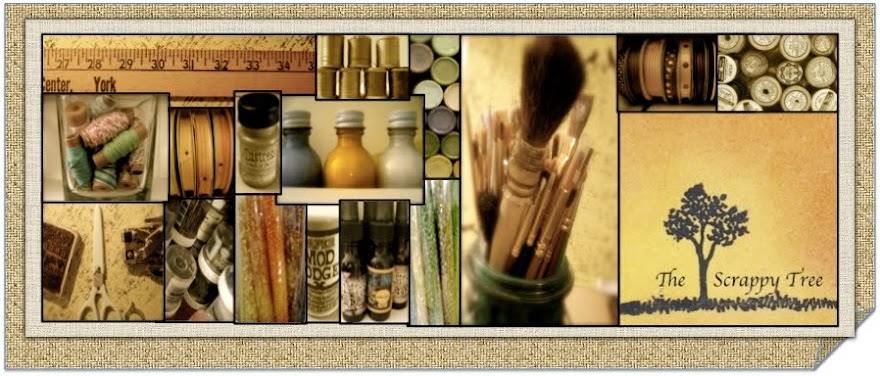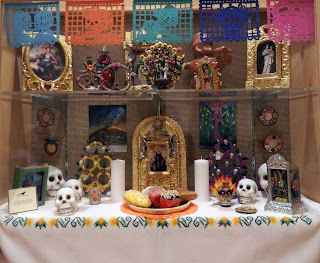Her face is unforgettable and she goes by many names:
Fancy Lady, Skinny, Bony, and Baldy. A fixture in Mexican society, she's not
some trendy fashion model, but Death (La Muerte).
La Catrina by Mario
López Torres
Hello, Diana here to share
a little bit of one of my favorite Mexican traditions: Dia de Muertos, which is
celebrated on November 2nd.
Every year The
National Museum of Mexican Art in Chicago opens a beautiful exhibition about the
celebration, on this post I am including photos I took during my visits from
this year and last year, forgive the bad pictures but most of them were taken
behind glass or without flash.
Photo from the Museums web page
A Little bit of the
Traditions History
More than 500 years ago, when the Spanish Conquistadors landed in
what is now Mexico, they encountered natives practicing a ritual that seemed to
mock death. It was a ritual the indigenous people had been practicing at least
3,000 years. A ritual the Spaniards would try unsuccessfully to eradicate. A
ritual known today as Día de los Muertos, or Day of the Dead.
Offering
for the Dead by Olga Costa
Unlike the Spaniards, who viewed death as the end of life, the
natives viewed it as the continuation of life. Instead of fearing death, they
embraced it. To them, life was a dream and only in death did they become truly
awake.
Display in the Museums Lobby
Untitled
by Oscar Soteno
Differing from the Roman Catholic imposed
ritual to commemorate All Souls’ Day, which is observed in many countries, the
custom established by pre-colonial Mexican civilizations become a ceremony
where indigenous beliefs blended with Catholic beliefs. Therefore, the Day of the Dead in Mexico is not a
mournful commemoration but a happy and colorful celebration where death takes a
lively, friendly expression.
 |
Cartoneria by Miriam Castañeda
|
 |
Frida Kahlo Skeleton by Castillo Orta F.
|
The Altar
The altar includes
four main elements of nature — earth, wind, water, and fire.
Earth is represented by
crop: The Mexicans believe the souls are fed by the aroma of food.
Wind is represented by
a moving object: Tissue paper is commonly used to represent wind.
Water is placed in a
container for the soul to quench its thirst after the long journey to the altar.
Fire is represented by
a wax candle: Each lit candle represents a soul, and an extra one is placed for
the forgotten soul.
 |
National
Museum of Mexican Art, 2010
I
hope you found this little post interesting, Happy Day of the Dead!
|
=Di
Sources: azcentral and DayoftheDead.com





















2 Scrappy thoughts:
Di, this post is absolutely fascinating :) thank you so much for sharing this with us! I think the altars are so beautiful :)
(was that a chocolate skull with TST I spotted?)
Oh WOW Di, what an interesting post. I am absolutely fascinated by this holiday every year. They have a huge tribute to it in the artists village in Santa Ana and the decor and crafts in the surrounding stores simply amaze me every time I see them. Thanks for sharing your insight with us! Kxx
Post a Comment